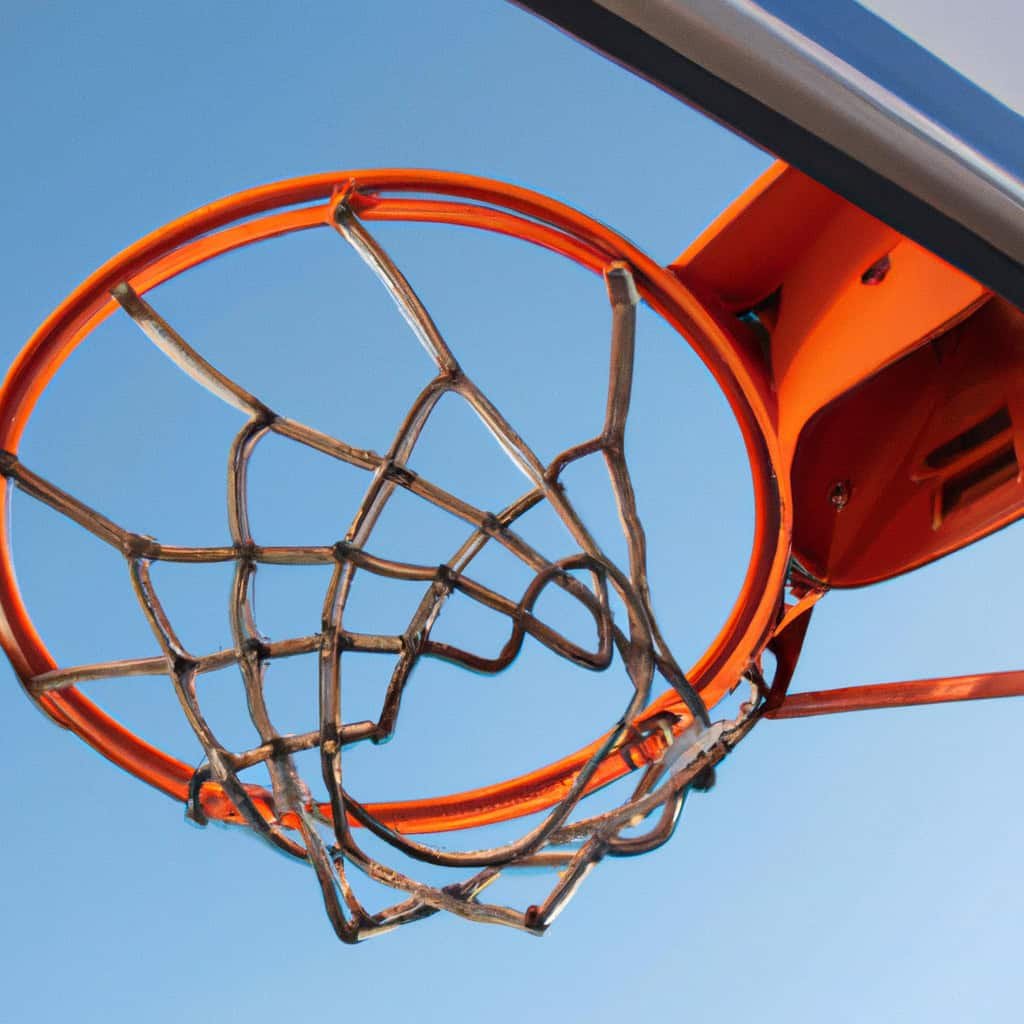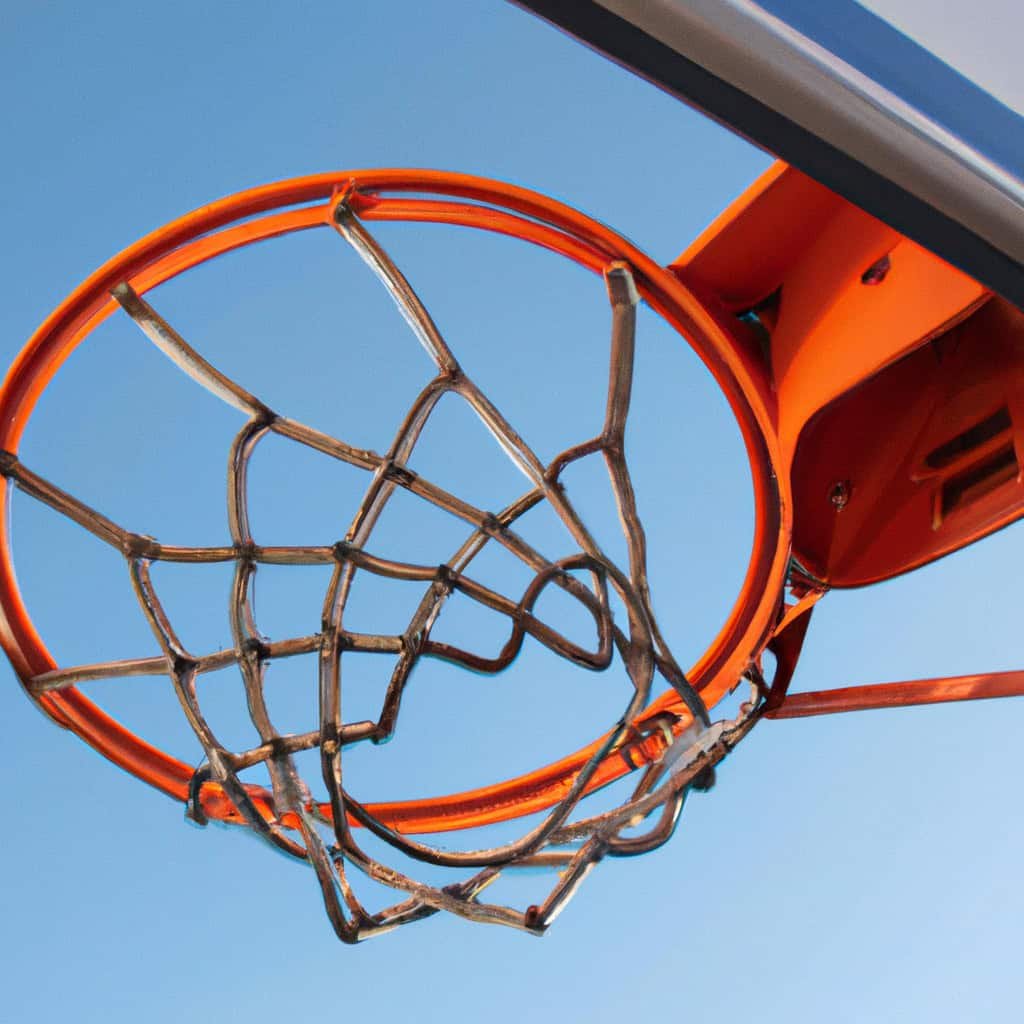Outdoor basketball rims are constantly exposed to the elements, which can lead to rust and corrosion over time. However, with the application of anti-rust coatings, these rims are able to withstand the harshest weather conditions and maintain their structural integrity. By creating a protective barrier between the rim and moisture, anti-rust coatings prevent oxidation and ensure a longer lifespan for outdoor basketball rims. So, if you’re looking to keep your basketball rims in top-notch condition, it’s time to consider the benefits of anti-rust coatings.
The Importance of Anti-Rust Coatings
Outdoor basketball rims are constantly exposed to various environmental factors such as moisture, rain, heat, and even saltwater in coastal areas. Over time, these factors can lead to corrosion and oxidation, causing the rims to weaken and deteriorate. This is where the importance of anti-rust coatings comes into play.
Preventing Corrosion and Oxidation
One of the primary functions of anti-rust coatings is to prevent corrosion and oxidation on the surface of basketball rims. Corrosion occurs when metal structures come into contact with moisture or other corrosive substances, leading to the formation of rust. Oxidation, on the other hand, is a chemical reaction that occurs when metal is exposed to oxygen in the air. These processes can significantly weaken the structural integrity of basketball rims, making them prone to damage and causing them to have a shorter lifespan.
Protecting against Environmental Factors
Anti-rust coatings provide a protective barrier that shields basketball rims from environmental factors such as moisture, rain, and saltwater. The coating acts as a barrier between the metal surface and these external elements, preventing moisture and corrosive substances from coming into direct contact with the rims. By doing so, the coatings help to reduce the chances of corrosion and oxidation, ultimately prolonging the lifespan of the rims.
Enhancing Durability and Strength
Anti-rust coatings not only provide protection against corrosion and oxidation but also enhance the durability and strength of outdoor basketball rims. The coatings form a strong bond with the metal surface, creating a protective layer that can withstand wear and tear. This additional layer of protection helps to maintain the structural integrity of the rims, making them more resistant to damage caused by constant use, weather elements, and other external factors.
How Anti-Rust Coatings Work
There are three main types of anti-rust coatings: barrier coatings, sacrificial coatings, and inhibitor coatings. Each type works in a slightly different way but serves the common purpose of preventing corrosion and enhancing the lifespan of basketball rims.
Barrier Coatings
Barrier coatings create a physical barrier between the metal surface and the surrounding environment. These coatings are typically made of materials such as epoxy or polyurethane and act as a shield that prevents moisture and corrosive substances from reaching the metal. Barrier coatings are highly effective in preventing corrosion, but they may require periodic inspection and maintenance to ensure their integrity.
Sacrificial Coatings
Sacrificial coatings, also known as galvanic coatings, rely on a sacrificial metal to protect the surface of basketball rims. The sacrificial metal has a higher susceptibility to corrosion, and when it comes into contact with corrosive substances, it corrodes instead of the basketball rim. This sacrificial process helps to prevent corrosion on the surface of the rims, extending their lifespan. Common sacrificial coatings include zinc and galvanized coatings.
Inhibitor Coatings
Inhibitor coatings work by releasing corrosion-inhibiting substances that form a protective layer on the surface of basketball rims. These substances inhibit the chemical reactions that lead to corrosion and oxidation, effectively preventing damage to the metal surface. Inhibitor coatings are often used in conjunction with other types of anti-rust coatings to enhance their protective properties.

Types of Anti-Rust Coatings
When it comes to anti-rust coatings for outdoor basketball rims, several types are commonly used due to their effectiveness and durability.
Zinc Coatings
Zinc coatings, such as zinc-rich primers, are widely used as anti-rust coatings for basketball rims. These coatings provide a sacrificial layer of zinc that corrodes instead of the metal, protecting the rims from rust. Zinc coatings are known for their excellent adhesion and resistance to wear and tear.
Galvanized Coatings
Galvanized coatings involve the application of a layer of zinc to the surface of basketball rims through a hot-dip galvanization process. This process creates a strong bond between the zinc and the metal, providing exceptional protection against corrosion. Galvanized coatings are highly durable and are capable of withstanding harsh environmental conditions.
Epoxy Coatings
Epoxy coatings are widely used for their excellent adhesion and resistance to chemicals, moisture, and UV radiation. These coatings form a tough, protective layer on the surface of basketball rims, preventing corrosion and oxidation. Epoxy coatings are known for their durability and longevity, making them an ideal choice for outdoor applications.
Polyurethane Coatings
Polyurethane coatings offer excellent resistance to abrasion, impact, weather elements, and UV radiation. These coatings create a strong barrier that protects basketball rims from corrosion and oxidation. Polyurethane coatings are highly flexible and can withstand extreme temperatures, making them suitable for outdoor use.
Application Techniques
The application of anti-rust coatings requires careful consideration of the specific needs and requirements of the basketball rims. There are several common application techniques that can be used to ensure proper coating coverage and adhesion.
Spraying
Spraying is a popular application technique for anti-rust coatings as it provides even and consistent coverage. This technique involves using a spray gun or airless sprayer to apply the coating evenly onto the surface of the basketball rims. Spraying allows for efficient coating application, especially for complex shapes and hard-to-reach areas.
Brushing
Brushing is a manual application technique that involves using a brush to apply the anti-rust coating onto the rims. This technique is often used for touch-ups or smaller areas that require localized coating application. Brushing allows for greater control and precision but may require more time and effort compared to spraying.
Dipping
Dipping is a method where the basketball rims are completely submerged in a bath of anti-rust coating. The rims are dipped and then removed, allowing the excess coating to drain off before the coating dries. This technique ensures full coverage of the rims, including hard-to-reach areas and crevices. Dipping is a suitable technique for mass coating applications but may not be practical for larger or irregularly shaped rims.

Maintenance and Repairs
To ensure the longevity and effectiveness of anti-rust coatings, regular maintenance and repairs are essential. By following these maintenance practices, you can maximize the lifespan of your basketball rims.
Regular Cleaning and Inspections
Regular cleaning and inspections are crucial to remove any dirt, debris, or corrosive substances that may have accumulated on the surface of the rims. Cleaning should be done using mild soap or detergent and a soft brush or cloth. Inspections should be carried out to detect any signs of coating damage or corrosion early on, allowing for timely repairs.
Touching up Damaged Coatings
In the event that the anti-rust coating becomes damaged, it is essential to promptly touch up the affected areas. This entails cleaning the damaged area, preparing the surface, and applying a fresh layer of coating to restore protection. It is important to ensure that the touch-up coating matches the original coating to maintain the overall protective integrity.
Reapplication of Coatings
Over time, anti-rust coatings may wear off, lose effectiveness, or become damaged beyond repair. In such cases, it is necessary to completely remove the old coating and reapply a new coating to the basketball rims. This process may involve surface preparation, such as sanding or abrasive blasting, to facilitate optimal adhesion of the new coating. Reapplication of coatings should be done in accordance with the manufacturer’s guidelines to achieve the best results.
Benefits of Anti-Rust Coatings
The use of anti-rust coatings on outdoor basketball rims offers several significant benefits that contribute to their prolonged lifespan and overall functionality.
Prolonged Lifespan of Outdoor Basketball Rims
Perhaps the most significant benefit of using anti-rust coatings is the extension of the lifespan of outdoor basketball rims. By protecting against corrosion, oxidation, and other environmental factors, these coatings help to maintain the structural integrity of the rims. This results in longer-lasting and more durable rims that can withstand the demands of outdoor use.
Cost Savings on Replacements
Investing in high-quality anti-rust coatings can lead to substantial cost savings in the long run. By preventing corrosion and extending the lifespan of basketball rims, coatings reduce the frequency of replacements. This not only saves money but also minimizes downtime and inconvenience associated with rim replacements.
Reduced Maintenance Efforts
Anti-rust coatings significantly reduce the maintenance efforts required to keep basketball rims in optimal condition. The protective barrier created by these coatings minimizes the need for regular cleaning, touch-ups, and repairs. This translates to less time and effort spent on maintenance, allowing for more focus on playing and enjoying the game.

Factors Affecting Longevity
While anti-rust coatings play a crucial role in extending the lifespan of outdoor basketball rims, several factors can influence the overall effectiveness and longevity of these coatings.
Quality of Coating Material
The quality of the anti-rust coating material directly impacts its protective properties and durability. Using high-quality coatings is imperative to ensure long-lasting protection against corrosion and oxidation. Investing in reputable and well-established coating manufacturers can provide assurance in the performance and reliability of the coatings.
Proper Surface Preparation
Proper surface preparation is crucial for the adhesion and effectiveness of anti-rust coatings. Before applying the coating, the basketball rims should be thoroughly cleaned, and any existing coatings or corrosion should be removed. This ensures a clean and smooth surface for optimal coating adhesion and performance.
Exposure to Harsh Weather Conditions
The severity and frequency of exposure to harsh weather conditions can also affect the longevity of anti-rust coatings. Outdoor basketball rims exposed to extreme temperatures, heavy rainfall, high humidity, and saltwater are more susceptible to corrosion. Regular inspections and maintenance are essential to identify and rectify any coating damage caused by these environmental factors.
Case Studies
Various case studies have demonstrated the effectiveness of anti-rust coatings in extending the lifespan of outdoor basketball rims. These studies provide real-life examples of how the proper selection and application of coatings can significantly enhance the durability and functionality of the rims.
Comparison of Coating Performance
A study conducted by a leading sports equipment manufacturer compared the performance of different anti-rust coatings on basketball rims exposed to outdoor environments. The study evaluated the coatings’ ability to prevent corrosion, maintain structural integrity, and withstand wear and tear. Results showed that barrier coatings and sacrificial coatings performed exceptionally well, significantly extending the lifespan of the rims compared to uncoated counterparts.
Real-Life Examples of Extended Lifespan
Numerous recreational facilities and sports clubs have reported extended lifespans of their outdoor basketball rims through the use of anti-rust coatings. The application of high-quality coatings, combined with regular maintenance practices, has resulted in basketball rims lasting well beyond their expected lifespan. These success stories highlight the practical benefits and value that anti-rust coatings bring to both recreational and professional environments.

Considerations for Purchase
When purchasing anti-rust coatings for outdoor basketball rims, several key considerations should be taken into account to ensure the best possible outcome.
Evaluation of Product Specifications
Carefully evaluating the product specifications is crucial in selecting the right anti-rust coatings. Consider factors such as durability, adhesion properties, resistance to weather elements, and compatibility with the basketball rim materials. Inquire about the performance guarantee, warranty, and any additional maintenance requirements to make an informed decision.
Cost-Effectiveness Analysis
While cost is an important consideration, it should not be the sole determining factor when choosing anti-rust coatings. A thorough cost-effectiveness analysis should take into account the quality, durability, and expected lifespan of the coatings. Investing in higher-quality coatings may result in long-term cost savings by reducing the need for frequent replacements and repairs.
Compatibility with Basketball Rim Materials
Different basketball rim materials may require specific types of anti-rust coatings for optimal performance. Consult with experts or coating manufacturers to ensure compatibility between the selected coatings and the materials used in the construction of the rims. This will help ensure proper adhesion, longevity, and overall effectiveness of the coatings.
Complementary Protection Measures
In addition to using anti-rust coatings, implementing complementary protection measures can further enhance the longevity and performance of outdoor basketball rims.
Regularly Applying Lubricants
Applying lubricants to moving parts of the basketball rims, such as hinges and springs, helps to reduce friction and prevent rust formation. Lubricants create a protective barrier that prevents moisture and other corrosive substances from causing damage to these components. Regular lubrication should be carried out as part of the overall maintenance routine.
Covering Rims during Off-Season
During periods of prolonged inactivity, such as the off-season or periods of non-usage, covering the basketball rims can provide an additional layer of protection. Protective covers shield the rims from direct exposure to weather elements, reducing the chances of corrosion and oxidation. This simple measure can significantly prolong the lifespan of the rims while they are not in use.
Implementing Rust Prevention Measures
In addition to anti-rust coatings, implementing rust prevention measures can further safeguard basketball rims from corrosion. Using desiccants or moisture-absorbing packs inside storage areas can help control humidity and prevent moisture buildup. Applying rust inhibitors or coatings specifically designed for rust prevention can offer added protection against corrosion, especially in areas with high moisture or corrosive environments.
In conclusion, the importance of anti-rust coatings cannot be overstated when it comes to ensuring the longevity and performance of outdoor basketball rims. By preventing corrosion and oxidation, protecting against environmental factors, and enhancing durability, these coatings play a vital role in maintaining the structural integrity of the rims. With proper application techniques, regular maintenance, and complementary protection measures, basketball rims can withstand the rigors of outdoor use and continue to provide enjoyment for years to come.

